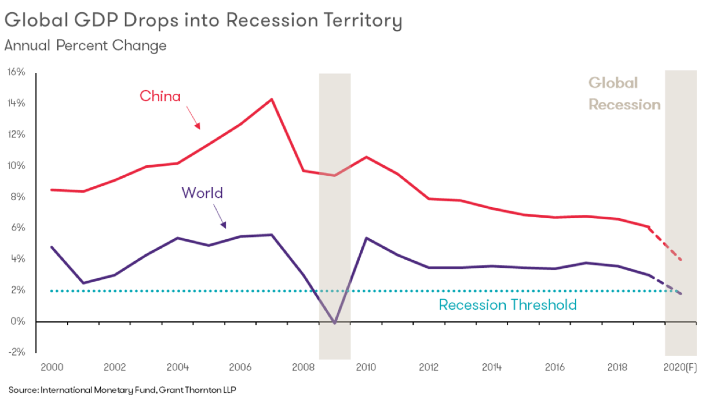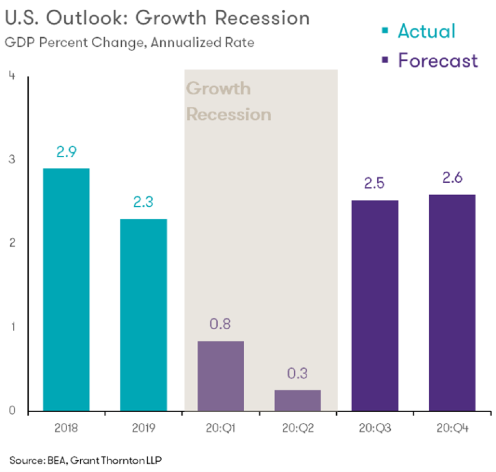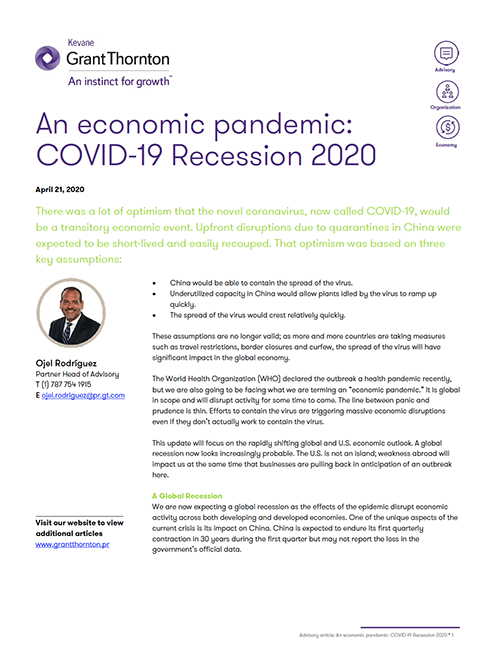-
Financial statements audits
Financial statement audits
-
Compliance audits
Compliance audits
-
Compilations and reviews
Compilations and audit
-
Agreed-upon procedures
Agreed-upon procedures
-
Corporate and business tax
Our trusted teams can prepare corporate tax files and ruling requests, support you with deferrals, accounting procedures and legitimate tax benefits.
-
International tax
Our teams have in-depth knowledge of the relationship between domestic and international tax laws.
-
Tax compliance
Business Tax
-
Individual taxes
Individual taxes
-
Estate and succession planning
Estate and succession planning
-
Global mobility services
Through our global organisation of member firms, we support both companies and individuals, providing insightful solutions to minimise the tax burden for both parties.
-
Sales and use tax and indirect taxes
SUT/ VAT & indirect taxes
-
Tax incentives program
Tax incentives program
-
Transfer Pricing Study
The laws surrounding transfer pricing are becoming ever more complex, as tax affairs of multinational companies are facing scrutiny from media, regulators and the public
-
Business consulting
Our business consulting services can help you improve your operational performance and productivity, adding value throughout your growth life cycle.
-
Forensic and investigative services
At Grant Thornton, we have a wealth of knowledge in forensic services and can support you with issues such as dispute resolution, fraud and insurance claims.
-
Fraud and investigations
The commercial landscape is changing fast. An ever more regulated environment means organizations today must adopt stringent governance and compliance processes. As business has become global, organizations need to adapt to deal with multi-jurisdictional investigations, litigation, and dispute resolution, address the threat of cyber-attack and at the same time protect the organization’s value.
-
Dispute resolutions
Our independent experts are experienced in advising on civil and criminal matters involving contract breaches, partnership disputes, auditor negligence, shareholder disputes and company valuations, disputes for corporates, the public sector and individuals. We act in all forms of dispute resolution, including litigation, arbitration, and mediation.
-
Business risk services
We can help you identify, understand and manage potential risks to safeguard your business and comply with regulatory requirements.
-
Internal audit
We work with our clients to assess their corporate level risk, identify areas of greatest risk and develop appropriate work plans and audit programs to mitigate these risks.
-
Service organization reports
As a service organization, you know how important it is to produce a report for your customers and their auditors that instills confidence and enhances their trust in your services. Grant Thornton Advisory professionals can help you determine which report(s) will satisfy your customers’ needs and provide relevant information to your customers and customers’ auditors that will be a business benefit to you.
-
Transaction advisory services
Transactions are significant events in the life of a business – a successful deal that can have a lasting impact on the future shape of the organizations involved. Because the stakes are high for both buyers and sellers, experience, determination and pragmatism are required to bring deals safely through to conclusion.
-
Mergers and acquisitions
Globalization and company growth ambitions are driving an increase in M&A activity worldwide as businesses look to establish a footprint in countries beyond their own. Even within their own regions, many businesses feel the pressure to acquire in order to establish a strategic presence in new markets, such as those being created by rapid technological innovation.
-
Valuations
We can support you throughout the transaction process – helping achieve the best possible outcome at the point of the transaction and in the longer term.
-
Recovery and reorganization
We provide a wide range of services to recovery and reorganisation professionals, companies and their stakeholders.
There was a lot of optimism that the novel coronavirus, now called COVID-19, would be a transitory economic event. Upfront disruptions due to quarantines in China were expected to be short-lived and easily recouped. That optimism was based on three key assumptions:
- China would be able to contain the spread of the virus.
- Underutilized capacity in China would allow plants idled by the virus to ramp up quickly.
- The spread of the virus would crest relatively quickly.
These assumptions are no longer valid; as more and more countries are taking measures such as travel restrictions, border closures and curfew, the spread of the virus will have significant impact in the global economy.
The World Health Organization (WHO) declared the outbreak a health pandemic recently, but we are also going to be facing what we are terming an “economic pandemic.” It is global in scope and will disrupt activity for some time to come. The line between panic and prudence is thin. Efforts to contain the virus are triggering massive economic disruptions even if they don’t actually work to contain the virus.
This update will focus on the rapidly shifting global and U.S. economic outlook. A global recession now looks increasingly probable. The U.S. is not an island; weakness abroad will impact us at the same time that businesses are pulling back in anticipation of an outbreak here.
A Global Recession
We are now expecting a global recession as the effects of the epidemic disrupt economic activity across both developing and developed economies. One of the unique aspects of the current crisis is its impact on China. China is expected to endure its first quarterly contraction in 30 years during the first quarter but may not report the loss in the government’s official data.
Growth is likely to be flat to negative in seven of the ten largest economies in the first quarter. These include: China, Japan, Germany, the UK, France, Italy and Canada. Brazil is now at more risk as it depends heavily on exports to China and is now dealing with its own exposure to the virus. Global growth is expected to slow to 1.8% in 2020, well below the 2% threshold that indicates a global recession.

A Growth Recession in the U.S

The previous chart shows the forecast for a “growth recession” in the U.S. That occurs when growth is too weak to keep unemployment from rising. Growth for the year is 1.5%, one half percent weaker than it was just a month ago. A recession cannot be ruled out. An epidemic in the U.S. would be even more disruptive to production and demand than it is abroad, given the sheer size of the economy and the risks to highly populated areas. The following factors are be considered as we continue to progress through the economic impacts of the pandemic:
Consumer spending slows
The most obvious effects of COVID-19 were initially expected to show up as reduced tourism and a loss in paychecks. Now, fear of contagion has prompted a more dramatic pullback in business travel and vacations in the U.S. Shortages will likely constrain spending even further, as imports from China have plummeted. As we learned from the SARS outbreak in 2003, it took a while for consumers to return to stores and other public spaces once the epidemic abated.
Business investment contracts
Business investment is expected to be hit the hardest by COVID-19. A full year contraction is possible given supply chain disruptions and the uncertainty associated with the virus. Businesses now need to hedge against pandemics. Losses span nearly every sector in the economy, from manufacturing to tech, finance and retail. Transportation, cruise lines and energy have been hit particularly hard. The majority of our pharmaceutical drugs are produced in Wuhan, China. All of those losses would compound if we were to see a major outbreak in the U.S. Plants would be shuttered as debt-laden firms would be forced to preserve cash.
Government spending rises
Costs associated with containing the crisis at the federal, state and local levels will further strain government coffers. Efforts to stimulate economic activity are likely but will not have the desired effects, given the unique nature of the disruptions we are experiencing. They will do more to provide a lift for economic activity after the crisis has abated.
A better tactic would be to prevent overly indebted firms from going under. The U.S. is not immune to another financial crisis, this time emanating from a large overhang of questionable corporate debt.
Inventories plummet
Disruptions to trade and production are expected to push inventories to the lowest levels since the Great Recession during the first half of the year.
Bottom Line
COVID-19 represents an economic pandemic because it is suppressing growth on a global scale. The U.S. is not immune. U.S. growth is poised to slow to a near standstill in the first half as the global economy tanks. The long-term effects could be even greater if it further undermines globalization.
How to prepare your business for what’s coming next
The COVID-19 pandemic has begun taking its toll on the financial markets, already threatening businesses and challenging management teams by forcing them to close for periods of times and drastically reducing customer flows. In these uncertain times and with a possible recession looming, the cash and liquidity needs of a business are paramount. Managers and decisionmakers need to focus on these four areas now, to make sure their businesses are prepared for what’s coming next.
- Understand your cash and working capital needs
Cash is the lifeblood of any business. In a volatile and slowing economy, getting an immediate handle on your daily cash needs is essential. In order to manage this, take a critical view of operations, review existing cash flow forecasting procedures and understand how potential disruptions to operations may affect liquidity.
- Scenario analyses should be performed on your financial and cash forecasts in order to visualize how different scenarios triggered by the virus would impact your short-term liquidity needs. This exercise may also highlight any borrowing base or covenant breaches that you could be facing and can help in decision making processes related to short-term operations.
- Look for opportunities to build a cash reserve and investigate whether drawing down on credit facilities could be prudent for safeguarding your business.
- Strategically manage working capital, potentially selling inventory or minimizing new inventory purchases to generate cash. Take a critical look at working capital KPIs such as days payable outstanding and days sales outstanding and understand impact of stretching these days in either direction.
- Cost optimization - be relentless on cost control
Maintaining your current or historical levels of profitability in an environment where supply and demand fundamentals are decreasing simultaneously can be difficult without closely analyzing and adjusting your business’s spending.
- Develop a strategy: do not execute cost-cutting initiatives at the risk of compromising revenue generating capabilities or diminishing value.
- Review fixed and variable costs carefully and determine what costs are actually needed to run the business.
- Develop and monitor cost reduction initiatives, such as rationalizing SG&A, taking a close look at headcount and instituting policies that encourage and reward cost savings and conservation.
- Evaluate customers and suppliers
In times of economic uncertainty, businesses could see increased pressure on the purchasing power and creditworthiness of customers while also facing tighter credit terms and product availability from suppliers.
- Do not assume your customers are financially healthy. Re-evaluate credit terms with current customers, negotiate the shortest reasonable terms, and carefully review the creditworthiness of each new customer before extending credit.
- Continuously monitor accounts. Failing to collect receivables timely (or even on an accelerated basis) may result in a cash flow shortfall that could have an immediate impact on all areas of your business.
- Negotiate for the most favorable credit terms with suppliers and critically evaluate your supplier base to determine if your current agreement is still most favourable for your business.
- Communicate early and often with your lenders
Communicate with your lenders early and often, explaining any situations that may arise and the actions you propose to address them. Transparency and open communication will serve you both well. Your existing lender could be your fastest source of additional liquidity.
- Conduct detailed modeling of your working capital facilities.
- Stay current on your debt if possible and assess capital structure concerns, including whether you should consider refinancing or recapitalization alternatives.
- Engaging in key stakeholder and lender discussions early can provide you the time and liquidity to address your immediate potential financial challenges.
The COVID-19 pandemic presents novel challenges and a chaotic business environment. By focusing now on cash flow and liquidity, you can provide your business with the financial cushion and flexibility to weather the storm.
References
An Economic Pandemic: COVID-19 Recession 2020
WHO declares novel coronavirus outbreak a pandemic
Focus on cash flow and liquidity for COVID-19 resilience
We are committed to keep you updated of all developments that may affect the way you do business in Puerto Rico.


